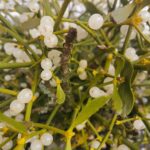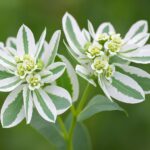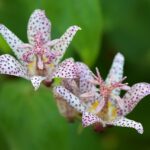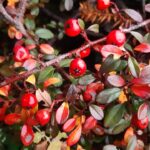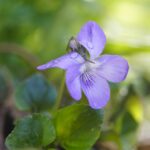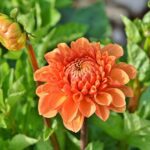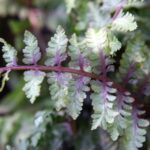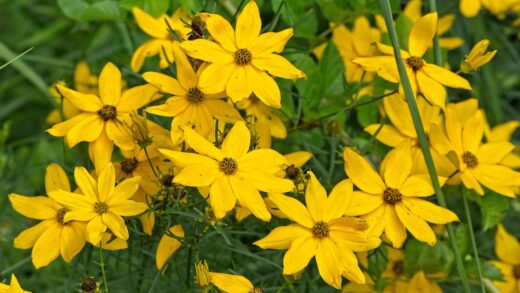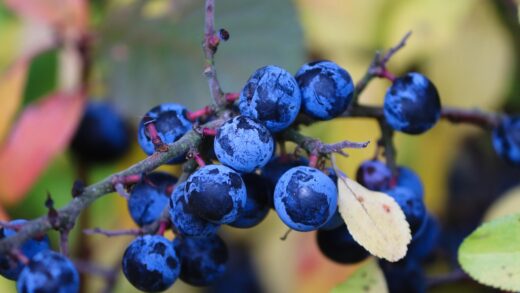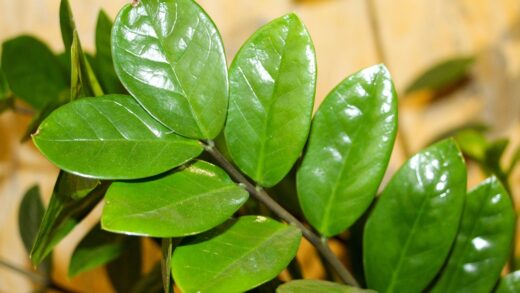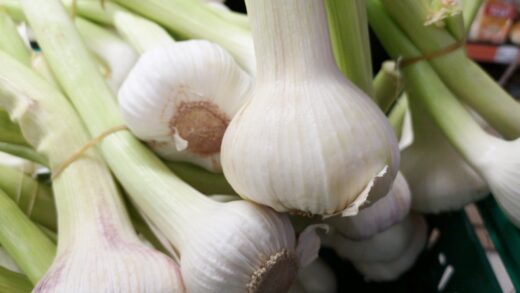The American violet, also known as Viola sororia, is an extremely popular and hardy perennial plant that adorns many gardens with its vibrantly colored flowers and heart-shaped leaves. Although it is generally considered a resilient species, unfortunately, it is not immune to various diseases and pests that can diminish its aesthetic value and even lead to the plant’s demise. The foundation of successful plant protection is the early recognition of problems and appropriate intervention, which requires essential knowledge of potential pathogens and pests. This article provides a detailed overview of the most common issues affecting the American violet and offers effective and environmentally friendly solutions for both prevention and treatment.
Fungal diseases and their prevention
American violets are most commonly attacked by fungal infections, which pose a serious threat, especially in wet, humid weather conditions and in areas with poor air circulation. One of the most significant pathogens is anthracnose, caused by various Colletotrichum species, which appears as dark, sunken spots on the leaves, stems, and flowers. These spots often consist of concentric circles and, in severe infections, can lead to leaf desiccation and plant stunting. The spread of the infection is promoted by overhead watering, as water spray splashes fungal spores from the soil onto the plant. The key to prevention is ensuring proper spacing between plants and watering at the soil level.
Powdery mildew is another common fungal disease, indicated by its characteristic white, powdery coating on the surface of the leaves, stems, and sometimes the flowers. This disease is caused by fungi from the Erysiphe genus, and although it rarely leads to the plant’s death, it significantly reduces photosynthetic activity, leading to slowed growth and a lack of flowering. Powdery mildew favors a combination of warm, humid nights and dry days and is particularly prone to spreading in densely planted, shady areas. We can effectively combat the infection by improving air circulation, promptly removing infected plant parts, and, if necessary, applying sulfur- or copper-based preparations.
Downy mildew and various leaf spot fungi can also cause serious problems for violets. Downy mildew (Peronospora violae) forms a bluish-white or grayish mold on the underside of the leaves, while yellowish, blurry spots appear on the upper surface, which later turn brown and die. In contrast, leaf spot fungi (e.g., Cercospora, Ramularia) create sharply defined brown or black spots, within which tiny black dots, the fungus’s reproductive structures, can be observed. Both groups of diseases prefer damp foliage, so keeping the foliage dry is essential for their prevention.
The most effective way to prevent fungal diseases is through an integrated approach. This is based on providing optimal growing conditions, including well-drained soil and a suitable sunny or partially shaded location. It is important to maintain sufficient distance between plants to ensure proper air circulation, which helps the leaves dry quickly. Watering should be done in the morning, directed at the soil, to avoid unnecessarily wetting the foliage. Regularly remove dead or infected plant parts and fallen leaves, as they can serve as a source of infection for the next season.
More articles on this topic
Identifying pests and their effects
The succulent leaves and tender shoots of the American violet are an attractive food source for numerous pests. Aphids are one of the most common and easily recognizable pest groups, appearing as tiny, usually green or black insects that colonize the shoot tips and the undersides of leaves. Their feeding weakens the plant, causes leaf distortion, and they excrete sticky honeydew, on which black sooty mold later develops, hindering photosynthesis. Furthermore, aphids can act as vectors for many plant viruses, thus causing serious damage indirectly as well.
Spider mites, especially the two-spotted spider mite (Tetranychus urticae), prefer hot and dry conditions, thus posing a threat primarily during the summer months. These arachnids are barely visible to the naked eye; their presence is indicated by fine, dense webbing on the undersides of leaves and tiny, yellowish feeding marks on the leaves. In a severe infestation, the leaves turn a bronze color, then dry up and fall off, which can significantly set back the plant’s development. For prevention, it is important to regularly mist the plants, as mites do not like high humidity.
Slugs and snails are primarily active at night and during rainy weather, and they chew characteristic, irregularly shaped holes in the leaves and flowers. Their damage is also revealed by the slimy trail they leave behind on the plant and the soil. They particularly favor young, tender shoots and seedlings and can cause significant destruction to a stand in a single night. The most effective method of control is to eliminate their hiding places (e.g., tall grass, boards, stones) and to use various traps (e.g., beer traps) or biological preparations (iron phosphate-based baits).
Less common, but occasionally causing serious problems, are various caterpillars and the violet gall midge (Dasineura violae). Caterpillars also leave holes or scalloped edges on the leaves with their chewing, while the larvae of the gall midge cause the characteristic rolling and thickening of the leaf edges, where their development takes place. Although this damage rarely threatens the life of the plant, it can be aesthetically displeasing. Control usually consists of the mechanical removal of the pests, but in more severe cases, biological insecticides based on Bacillus thuringiensis can also be used.
More articles on this topic
Viral and bacterial infections
Although less common than fungal diseases, viral and bacterial infections can cause much more severe and difficult-to-manage problems in American violet populations. There is no cure for viral infections, so prevention and the rapid removal of infected individuals are the only effective control strategies. The most common symptoms include mosaic discoloration, yellow spotting, or vein clearing on the leaves, stunted growth, deformation of leaves and flowers, and changes or streaking in flower color. These symptoms can be easily confused with signs of nutrient deficiency, making accurate diagnosis often difficult.
Several viruses can infect violets, including Cucumber Mosaic Virus (CMV) and Tobacco Mosaic Virus (TMV). These viruses are most commonly spread between plants by sucking pests, such as aphids, but they can also be introduced into the stand through infected garden tools or even planting material. Once inside the plant’s sap stream, viruses cause a systemic infection, meaning they spread to all parts of the plant. For this reason, infected plants cannot be cured and serve as a constant source of infection for healthy plants in their vicinity.
Bacterial leaf spot (e.g., caused by Pseudomonas, Xanthomonas species) can be difficult to distinguish from fungal spots, but there are a few characteristics that can help with identification. Spots caused by bacterial infections are often water-soaked, have an oily or greasy appearance, and are frequently surrounded by a yellow halo. The spots are typically angular, as their spread is limited by the leaf veins. Bacteria enter the plant through small wounds or the plant’s natural openings (e.g., stomata), and their rapid proliferation is favored by warm, wet weather.
The foundation of controlling viral and bacterial diseases is prevention. The most important step is to obtain healthy, virus-free planting material from a reliable source. Consistent control of pest vectors, especially aphids, is essential as they are the primary spreaders of viruses. During garden work, regularly disinfect tools (e.g., pruning shears) with alcohol or a bleach solution to prevent the transmission of pathogens from one plant to another. If you notice symptoms suggestive of a viral infection on a plant, the best course of action is to immediately remove and destroy it to protect other plants from infection.
Integrated pest management and biological solutions
Integrated Pest Management (IPM) is a holistic approach that prioritizes environmentally friendly, preventive, and biological methods for pest control, resorting to chemical pesticides only as a last resort. The goal of this strategy is not the complete eradication of pests, but keeping their population at a level that no longer causes economic or aesthetic damage. The basis of IPM is regular monitoring, during which we observe the condition of the plants and the appearance of pests and pathogens to intervene in a timely and targeted manner. This approach is more sustainable and safer in the long run for both the environment and humans.
Biological control is one of the most important components of IPM, based on the use of a pest’s natural enemies (predators, parasitoids). For example, ladybugs and their larvae, hoverfly larvae, and lacewings are extremely effective against aphids. We can attract these beneficial organisms to our garden by planting flowering plants that provide nectar and pollen, or they can be released in commercially available forms. Against spider mites, we can deploy predatory mites (e.g., Phytoseiulus persimilis), which effectively regulate the pest population without harming the plant or the environment.
Numerous organic and homemade remedies are also available that can be effective against pests and early-stage fungal infections. A spray of potassium soap solution can be very useful against aphids and mites, as it dissolves the insects’ outer exoskeleton, leading to dehydration. Neem oil is another versatile biological product with insect-repellent, anti-feedant, and fungicidal properties. Against powdery mildew in its early stages, spraying with a solution of baking soda or a milk-water mixture can be effective, as it changes the pH of the leaf surface, making it unfavorable for the fungus.
Last but not least, the healthiest plants grow in the healthiest ecosystems. Creating a biodiverse garden, where flowering perennials, herbs, and even a small water feature have a place alongside ornamental plants, attracts beneficial organisms and creates a natural balance. Healthy, nutrient-rich soil with good structure ensures vigorous plant growth and natural resistance. Mulching helps retain soil moisture, suppresses weeds, and improves soil life. By consistently applying these agrotechnical methods, we can minimize plant protection problems and enjoy the beauty of the American violet for many years to come.



